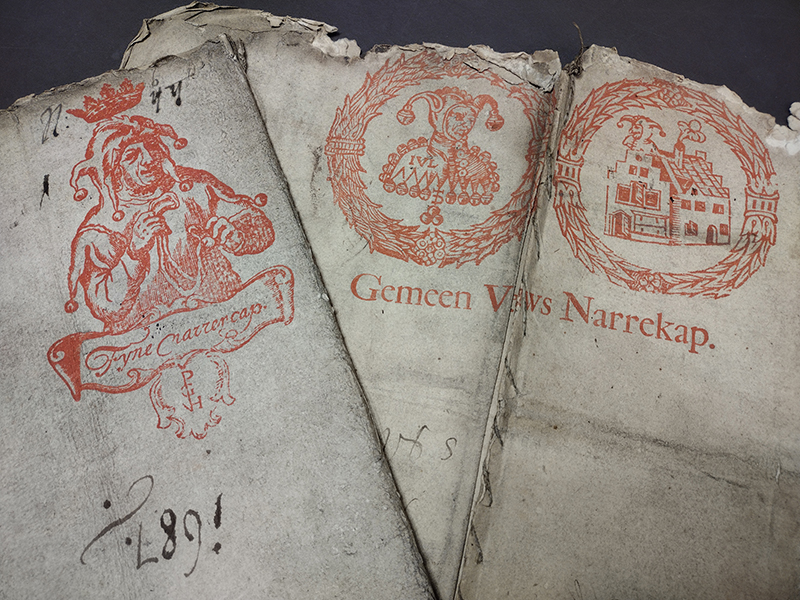 By Ellie Jones, Cathedral Archivist
By Ellie Jones, Cathedral Archivist
A delightful surprise recently emerged in the Archives. These jester-type characters appear on the loose covers of some court books from the late 1600s. Stamps such as these were generally marked on the wrappers of bundles of paper to identify its manufacturer, size and quality. Bundle wrappers were ephemeral and usually thrown away, so it was a real treat to find these fine examples.
These batches of paper, bought by the Dean & Chapter in the 1680s, clearly came from the Netherlands (where much of the paper used in England at the time came from). In one of the stamps a fool has popped out of the roof of a traditional Dutch gabled house, and the words ‘Gemeen Veuws Narrekap’ are Dutch for “common fool’s cap”.
Foolscap was one of the commonest paper formats in parts of Europe from the 15th to 20th centuries. It was originally named after the design of the watermark which was used by the first makers of that type of paper – the fool with his cap and bells. By the mid-17th century Foolscap was the name given to a specific paper type, regardless of the watermark. The makers of the paper shown here, however, have used the imagery both on the outer stamp and on the watermark.
Until about 50 years ago, Foolscap would have been a familiar sight in stationer’s shops, homes, schools and offices across Britain, but it has now been replaced by A4. A4 is slightly smaller than Foolscap: 210mm x 297mm (8.27 inches x 11.7 inches), whereas Imperial Foolscap is 8 ½ x 13 ½ inches (216 × 343 mm), and British Foolscap is 8 × 13 inches (203 × 330 mm). A4 is part of the A Series of paper sizes, where each size is half of the area of the next largest (so A5 is half the size of A4, which is half the size of A3). The A Series originated in Europe in the late 19th century, becoming the standard in Germany in 1922, followed by other countries: the Netherlands in 1925, Sweden in 1930, Japan in 1951, and the UK in 1971. By 1975 so many countries were using it that it became the official ISO international standard, used by all countries except the United States and Canada.